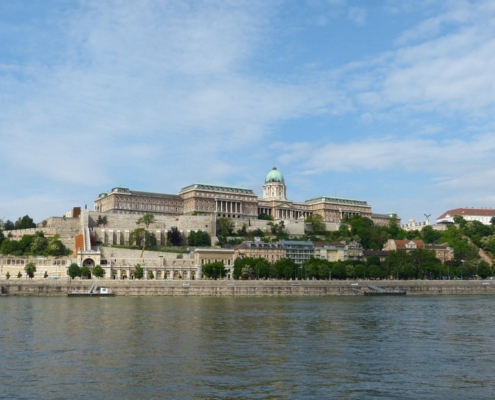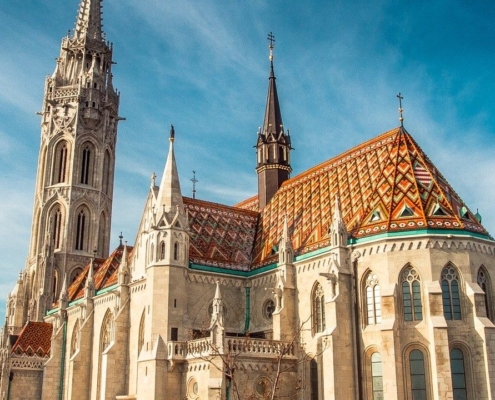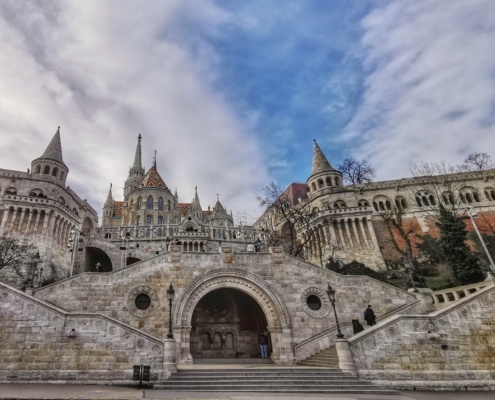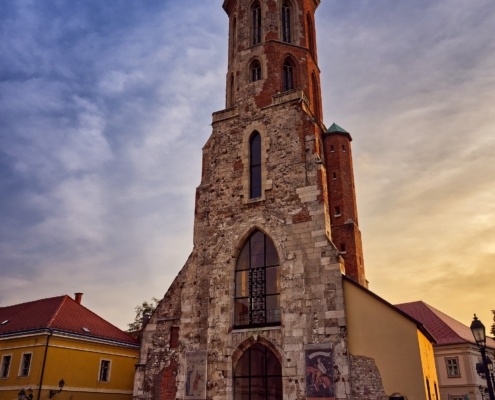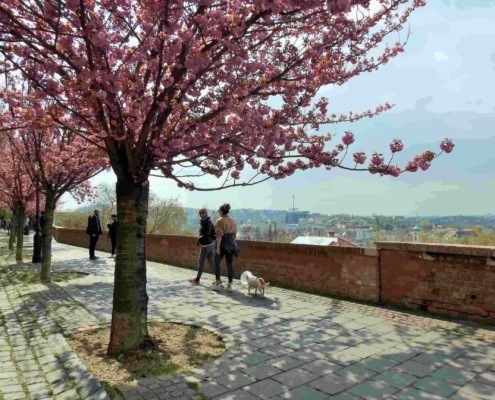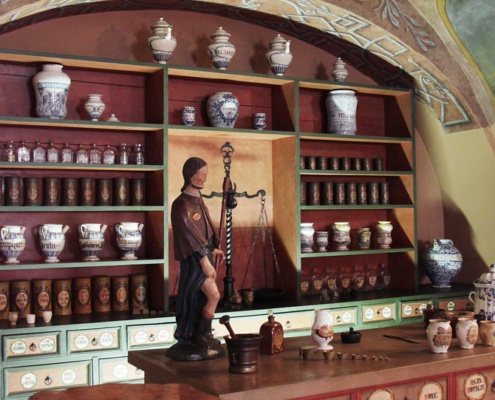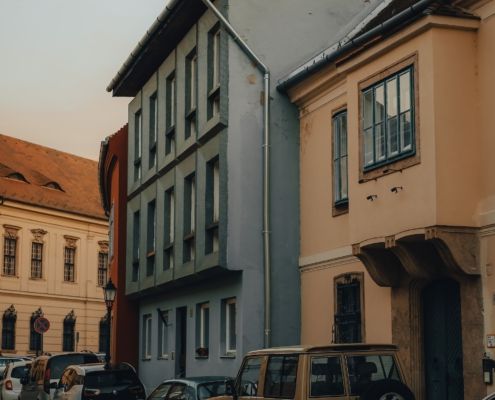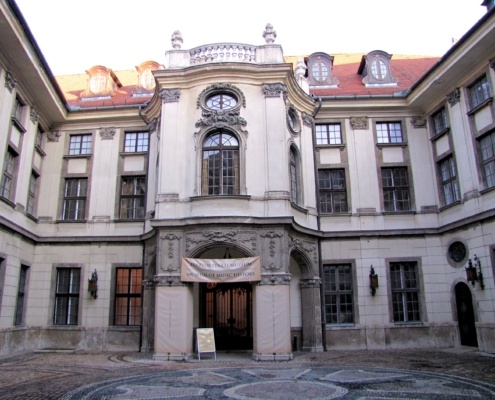Sharing the Best of Budapest: A Guide to Experiencing Hungary’s Vibrant Capital
Budapest, the enchanting capital of Hungary, beckons travelers with its rich history, stunning architecture, and vibrant culture. Whether you’re a first-time visitor or returning to uncover more hidden gems, Budapest offers an abundance of experiences that capture the essence of Central Europe’s charm. Let’s dive into how you can share and savor the best of Budapest during your visit.
Explore the Best of Budapest’s Landmarks
- Buda Castle Hill: Begin your journey with a visit to Buda Castle Hill on the Buda side of the river Danube. Explore its historic grounds, enjoy panoramic views of the Danube River and Pest side, and wander through charming cobblestone streets lined with medieval architecture. Major sights you will be passing by: Matthias Church, Fisherman’s Bastion, Maria Magdalena Church ruins, Buda Promenade, Rock Hospital Museum, Matthais Fountain.
- Hungarian Parliament Building: Admire the grandeur of one of Europe’s most iconic parliament buildings, situated along the Danube River in Pest. Join a guided tour to marvel at its Neo-Gothic architecture and learn about Hungary’s parliamentary history.
- St. Stephen’s Basilica: A masterpiece of Neo-classical architecture, St. Stephen’s Basilica is a must-visit for its stunning interior adorned with mosaics and its panoramic views from the dome’s observation deck. Do not miss the 1000 year old mummified right fist of St. Stephen.
- Dohany Street Grand Synagogue Complex: This complex is located in Budapest’s historic Jewish Quarter, is not only the largest synagogue in Europe but also a poignant symbol of resilience and renewal. Visitors can explore the complex, which includes the stunning Moorish Revival synagogue, the Holocaust Memorial, and the Jewish Museum, offering insights into Hungary’s Jewish heritage and history.
- Gellért Hill with Citadel : Gellért Hill, crowned by the iconic Citadel, provides panoramic views of Budapest and the winding Danube River below, making it a must-visit for breathtaking vistas.Besides its scenic beauty, Gellért Hill is home to the Gellért Thermal Baths and the Statue of Liberty, offering a blend of relaxation, history, and stunning outdoor experiences.
- Margaret Island: Escape the bustling city and relax on Margaret Island, a tranquil oasis in the middle of the Danube River. Explore its gardens, musical fountain, and recreational facilities.
- Chain Bridge: This iconic symbol of Budapest connects Buda and Pest across the Danube River, offering pedestrians and vehicles alike stunning views of the cityscape. Built in the 19th century, the Chain Bridge combines architectural elegance with historical significance, making it a beloved landmark and a favorite spot for evening strolls to capture Budapest’s illuminated beauty.
- The Cave Church: This is a unique religious site located within Gellért Hill. Carved into natural caves, it offers a serene atmosphere for worship and exploration, showcasing intricate rock-hewn architecture and religious artifacts.
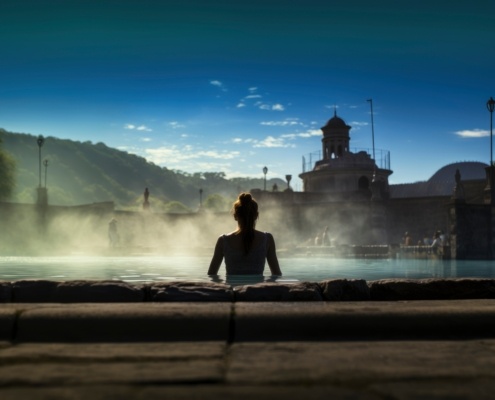
Best of Budapest’s Leisure Activities
- Thermal Baths: Experience Budapest’s renowned thermal baths, such as Széchenyi Thermal Bath or Gellért Thermal Bath, where you can relax in healing waters surrounded by beautiful Art Nouveau and Neo-Baroque architecture. Another excellent choice is Lukács Thermal Baths, which offers an authentic experience and is often less crowded than the more popular options.
- Ruin Bars of the Jewish Quarter: Explore the unique ruin pubs tucked away in Budapest’s historic Jewish Quarter. These eclectic bars are housed in abandoned buildings and courtyards, offering a blend of art, culture, and nightlife.
- Hungarian Cuisine: Indulge in traditional Hungarian dishes like goulash, lángos (fried dough), and chimney cake (kürtőskalács) at local eateries and markets. Pair your meal with Hungarian wines or pálinka, a traditional fruit brandy.
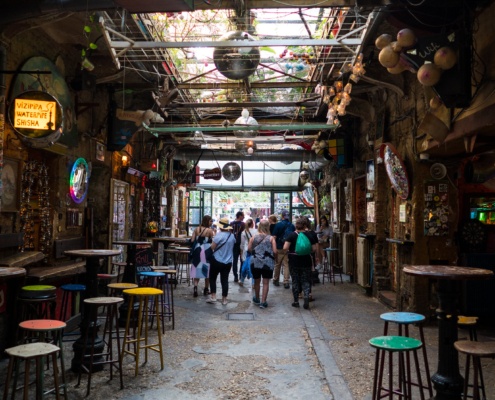
Best of Budapest’s Hidden Gems and Local Secrets
Eclectic Neighborhoods: Wander through districts like the bohemian District VII (Erzsébetváros) and artistic District VIII (Józsefváros), where you’ll find street art murals, trendy cafes, and local boutiques. If you want to meet some local students, it is worth checking out the artist cafés and bars in District XI., which is the surrounding neighborhood of the Gellért Bathhouse.
Kopaszi Gát: This damn is located on the Buda side of Budapest along the Danube River. It is a serene park offering a peaceful escape from the city’s hustle and bustle. Visitors to Kopaszi Gát can enjoy leisurely walks along the waterfront, relax in green spaces surrounded by modern architecture, and dine at cozy cafes and restaurants with scenic views of the river.
Kolodko Mini Statues: These guerilla statues are scattered throughout Budapest’s streets. These are whimsical and miniature bronze sculptures created by Hungarian artist Mihály Kolodko. Each statue tells a unique story or depicts a playful scene, adding charm and surprise to the city’s urban landscape and delighting both locals and tourists alike.
Római Part: This long promenade is located along the Danube River in Budapest’s Óbuda district, and is a popular recreational area known for its riverside promenade and vibrant atmosphere. Visitors to Római Part can enjoy riverside dining at cozy restaurants, explore local bars and cafes, and take part in various water sports and leisure activities during the summer months.
Shoes on the Danube Memorial: The 60 pairs of bronze shoes memorial in Budapest is a poignant tribute to the victims of the Holocaust. It consists of sixty pairs of iron shoes, representing Jews who were ordered to remove their shoes before being shot into the Danube River during World War II.
Share Your Budapest Experience
Join our daily Free Tours in Budapest and share your experience on our Facebook page with your fellow travelers. Sharing the best of Budapest goes beyond sightseeing; it’s about immersing yourself in the city’s vibrant culture, embracing its history, and creating lasting memories. From exploring iconic landmarks to indulging in local cuisine and uncovering hidden gems, Budapest offers a wealth of experiences for every traveler. Join us in celebrating the beauty and charm of Hungary’s capital city and share your Budapest adventures with the world!

